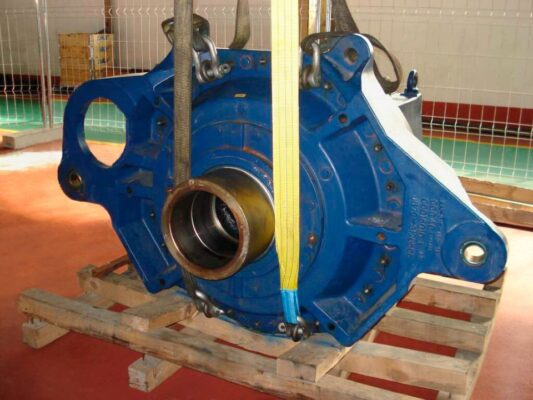1. Take care of the basics
Turbine designs continue to develop and advance, and components are becoming more standardized and durable. Turbine data is also improving, enabling operators to monitor any potential issues with the machines. This is a vital factor in maintaining best possible uptime and performance. However, it is worth noting that human error can always have a part to play.
2. Reduce costs and stay in control
The wind industry has made enormous strides in cutting the cost of the energy it provides. Reducing operational expenditure can play a significant role in this. However, it is crucial to understand in which areas you are cutting costs and what the long-term implications will be.
Andersen explains: “To prevent operational expenditure from rising, more and more companies are turning to subcontractors. But at the same time, you have to maintain control and think about the future. Cutting costs in the short term is risky if you don’t understand the consequences, and it could have long-term implications.”
3. Perform maintenance on time
Each wind farm is different – with every one having unique requirements and challenges. For this reason, maintenance should be tailored to individual projects. Nevertheless, predictive maintenance is one concept that can prove beneficial for all wind farms. Servicing should be completed in set timeframes in order to avoid downtime during important spells such as a high-wind period.
Andersen states that: “Preplanning and organization can result in significant benefits. Servicing should not just be about fixing a machine – it should be about looking after it so that you can achieve maximum uptime and efficiency.”
4. Consequences of reactive maintenance
Maintenance should not be about fixing critical issues – it is about avoiding them. However, Andersen says that as much as 30–40% of time is spent resolving serious issues before actual servicing can begin.
“A lack of manpower or long distances between turbines can result in the service not being completed in time. Also, if we are postponing things due to having to fix components, this is likely to lead to more ‘firefighting’.”
Servicing should not just be about fixing a machine – it should be about looking after it.
5. The little things add up to a lot
Looking for marginal gains is often an important theme when managing a wind farm effectively. It is quite common for maintenance issues on a single machine to be forgotten about within big projects. It is easy to put them to one side and not act immediately.
Andersen gives the example of two or three turbines being down on a farm of 200 machines. “It is important to focus on all units, as each one can provide thousands of production hours over the course of a year. If you look at the wind farm as a whole, you might not notice much difference, but it all adds up.”
6. Keep service checklists
Maintenance checklists are very important in the service strategy of wind turbines. However, they need to be kept up to date. With a proper checklist, wind farm operators can account for planned maintenance and ensure the necessary spare parts are available when needed.
“Many checklists are too rigid,” says Andersen. “They were developed when the machinery was new. But as time goes on, the conditions change and the checklists become out of date.”
7. Be realistic about what your staff can achieve
There is information for every system and platform detailing what they need and how they could potentially fail. But does your service team know this? It is important to fully understand the specific strengths and skills of your service engineers so you can identify possible areas for improvement.
Andersen explains: “You have to be realistic about what your service engineers can achieve. While they may be specialized in one area or understand one platform well, there are very different approaches to different technologies. Many engineers simply don’t receive the additional training they need for new platforms.”



